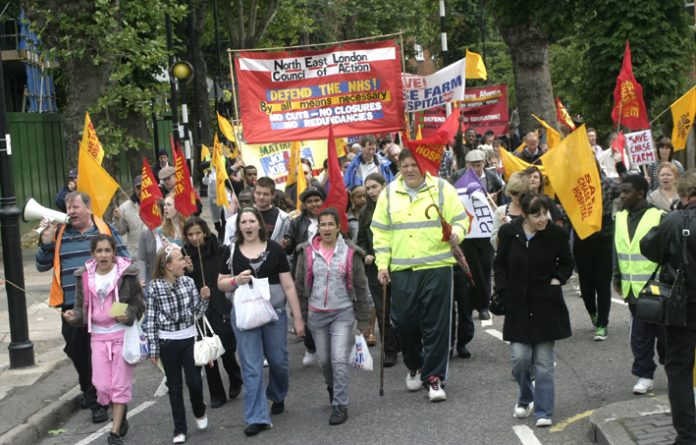
One in three NHS accident and emergency departments could close across London, documents seen by the BBC have revealed.
Eleven A&E units are under threat from closure, under reorganisation plans by the area NHS London. There are currently 31 A&Es in the capital.
Six of these may go in the west of the city alone, according to plans by the North West London Commissioning Partnership (NWLCP), seen by BBC London.
A&E services at Chase Farm Hospital, in Enfield, north London, and Queen Mary’s Hospital in Sidcup, south London, are listed for closure.
The closure of the A&E department at King George Hospital in Ilford, east London, is also under consultation.
And concerns have been raised by MPs in south-west London about the future of A&E services at Kingston Hospital.
The Whittington Hospital A&E is set to close in a merger with the Royal Free Hospital, according to NHS plans which are going out for consultation.
As a part of a London-wide shake up, the NWLCP is considering plans to shut five of the eight A&Es in the north-west London sector alone.
The current eight A&Es in the area are: Ealing Hospital, Hillingdon, Northwick Park, Central Middlesex, Chelsea and Westminster, St Mary’s, West Middlesex and Charing Cross.
The NWLCP document cited an alleged ‘current overprovision of certain specialties such as A&E and maternity’ causing ‘financial and quality issues’.
The document, entitled NWL Sector Integrated Strategic Plan 2009 – 2014, said St Mary’s in Paddington would remain as an A&E, as it has already been designated a major trauma centre by NHS London.
The other two are yet to be decided.
In giving its feedback on NWLCP’s plans, NHS London said: ‘On the basis of an initial review we have a concern that three Major Acute Hospital (MAH) sites are clinically and financially unsustainable.’
The health authority also advised NWLCP that it should make it clear that there is the possibility that some hospitals may close to be replaced by polyclinics.
NHS London has revealed plans for more than 100 polyclinics across the capital over the next five years.
A&E consultant Dr Kevin O’Kane told the BBC: ‘We know that there are enormous budget cuts coming in the next seven years, £5.2bn, but decisions as to where these cuts will be made in terms of clinical services are being held behind closed doors.’
He added: ‘It is suggested that two-thirds of hospital emergency appointments and fifty per cent of hospital out-patients appointments will be sent to polyclinics.
‘Polyclinics will be staffed by general practitioners and nurses, but at the same time, according to the report, it is suggested that general practitioners’ time is reduced by 30 per cent.’
Consultant surgeon and member of the BMA Council, Mrs Anna Athow told the BBC Radio London: ‘It’s not just north-west London where A&Es are threatened.
‘NHS London are proceeding with Lord Darzi’s framework for action of 2007, which aims to reduce London’s 32 District General Hospitals by a half to two-thirds.
‘Everybody knows that when a hospital loses its A&E it can be the beginning of the end.
‘If they close completely they could be replaced by a polyclinic and a treatment centre.
‘If downgraded to a Darzi local hospital, a hospital could lose its A&E at night or surgical cover at night.
‘Polyclinics are glorified GP surgeries, with GP services, some out-patients and minor surgery, but they cannot be compared to an A&E department which has all the back-up of a whole hospital, including complex investigations, path labs, teams of doctors, including registrars and consultants, and of course in-patient beds to admit patients to.
‘You couldn’t be treated at a polyclinic if you had an appendicitis, severe bleeding from a miscarriage, or a fractured ankle.’